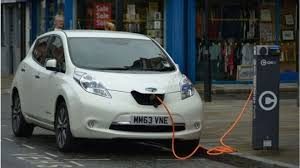electrodes and format
World automakers see China as their launching pad for electric vehicles
 This week, some of the world’s largest automobile companies presented their flagship electric vehicles at the Shanghai motor show. Many of these electric cars will only be available in China, where there are government subsidies and policies in favor of electric cars. As the world’s largest car market and manufacturing center, China is becoming the center of electric car development.
This week, some of the world’s largest automobile companies presented their flagship electric vehicles at the Shanghai motor show. Many of these electric cars will only be available in China, where there are government subsidies and policies in favor of electric cars. As the world’s largest car market and manufacturing center, China is becoming the center of electric car development.
On Tuesday, Audi introduced its electric sports crossover Q2L e-tron, which will be produced in the southern city of Foshan and is available only in the domestic market of China. The luxury German brand also launched an electric model for China, presenting it in San Francisco last year as the first production electric model. E-tron will also be produced in China starting from 2020. Continue reading
BNEF: by 2040, almost 60% of new car sales will be electric
 According to estimates by Bloomberg sales of fuel and vehicles has already peaked, and perhaps never more to rise, because the price of batteries fell. The increase in the number of electric vehicles, in turn, means that the peak demand for oil can come in just 10 years.
According to estimates by Bloomberg sales of fuel and vehicles has already peaked, and perhaps never more to rise, because the price of batteries fell. The increase in the number of electric vehicles, in turn, means that the peak demand for oil can come in just 10 years.
According to a new Bloomberg NEF report, oil demand is projected to peak in 2028 for passenger cars and in 2035 for commercial vehicles. The rapid growth in electric vehicle sales will cause a slowdown, a peak, and then a drop in oil consumption. Oil prices and the cost of investment in oil companies will fall. Continue reading
Used batteries from electric vehicles can disrupt the energy sector and create value for energy storage
 The battery does not expire after it has already exhausted its initial use in an electric vehicle. Batteries have great potential for reuse in stationary energy storage systems. In addition, by reducing the cost of energy storage, they can help to integrate more renewable energy sources into the network.
The battery does not expire after it has already exhausted its initial use in an electric vehicle. Batteries have great potential for reuse in stationary energy storage systems. In addition, by reducing the cost of energy storage, they can help to integrate more renewable energy sources into the network.
Lithium-ion batteries used in electric vehicles, which are usually designed for a decade (8 years or mileage up to 160,000 km). But even after 10 years of operation in electric vehicles, batteries can be reused in markets that require stationary energy storage with 100-300 cycles per year. Alternative re-use is mass utilization, which is possible in most of the regions in accordance with the rules of occupational health and safety, or disposal, which may make sense for battery manufacturers who want to get valuable metals, such as cobalt and Nickel, and which can achieve competitive costs for processing. Continue reading



